Residing around rocky ground and hard structures, these characteristic and colourful fish are full of muscle that is sure to test your gear.
Ballan wrasse
There are several species of wrasse in UK waters and the Ballan Wrasse (Labrus bergylta) is the largest of the species we find here. The British record currently stands at over 9 lb, with a 5 lb fish is considered a specimen size. The general stamp of fish is from micro-size juveniles up to 4 lb.
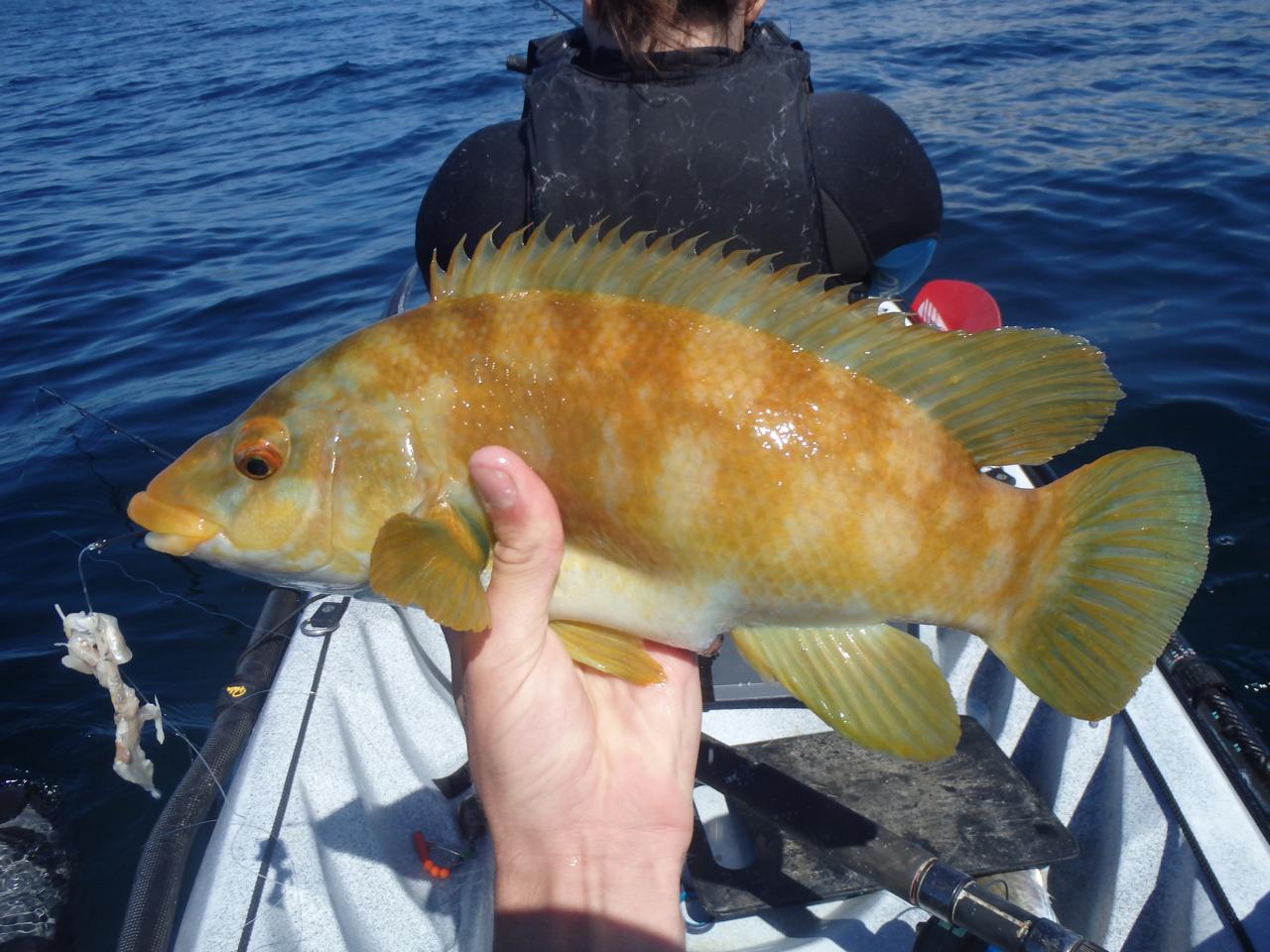
Ballans are often colourful fish and can be found in a range of colour variations including brown backed with a golden belly, vibrant green, bright red with cream spots, deep red, green/brown with blue markings and many more! Colours often relate to the habitat they are living in, with kelp dwellers often dark brown or deep red.
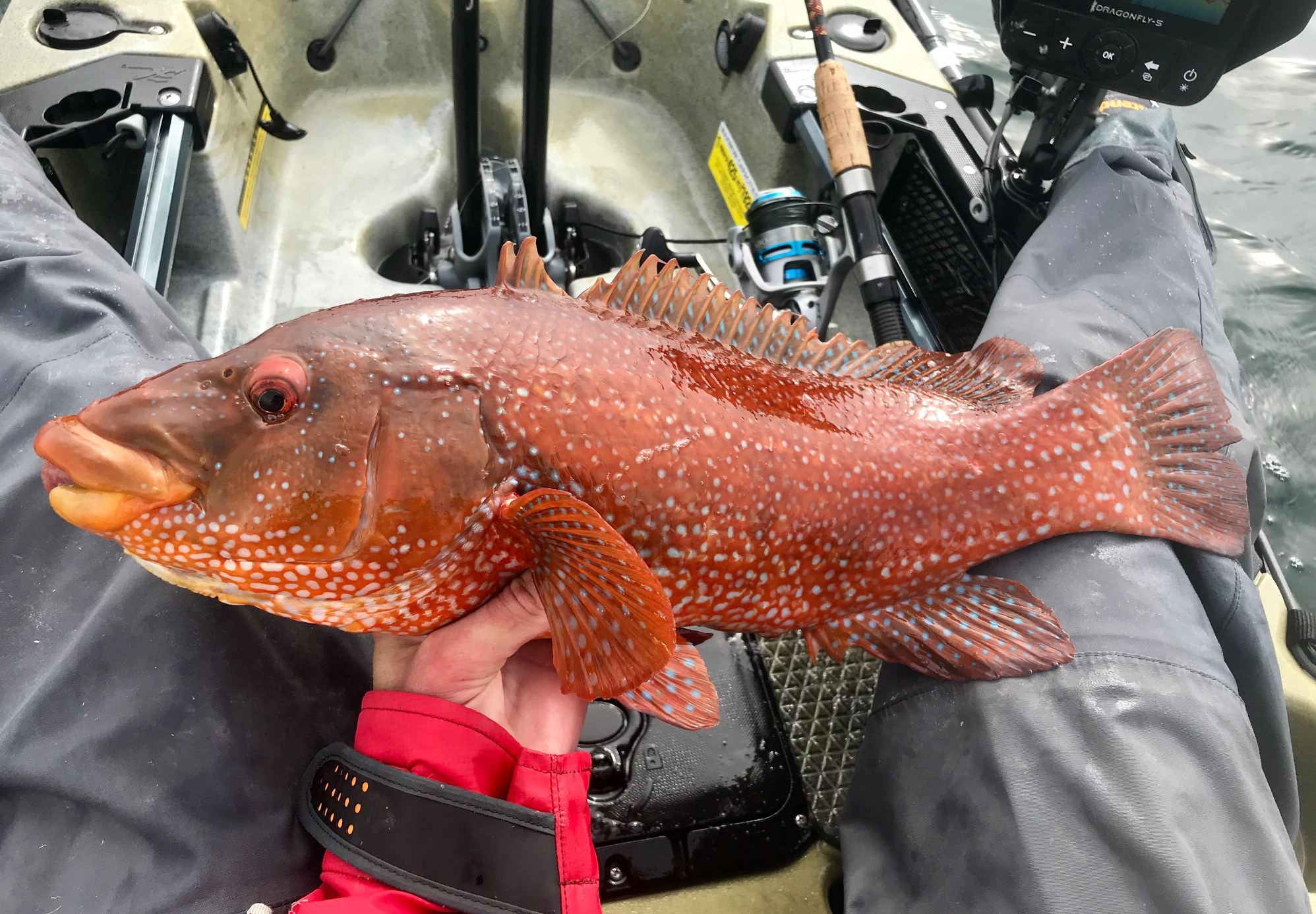
These fish have a big and boisterous attitude with a fine set of teeth and once hooked will put up a powerful fight making them an attractive target for shore, kayak and boat anglers alike. Ballan wrasse have a varied diet mostly consisting of small shellfish such as crabs, shrimps and limpets, along with marine worms and small fish. Their strong teeth and powerful jaws have no problem crushing crab and limpet shells!
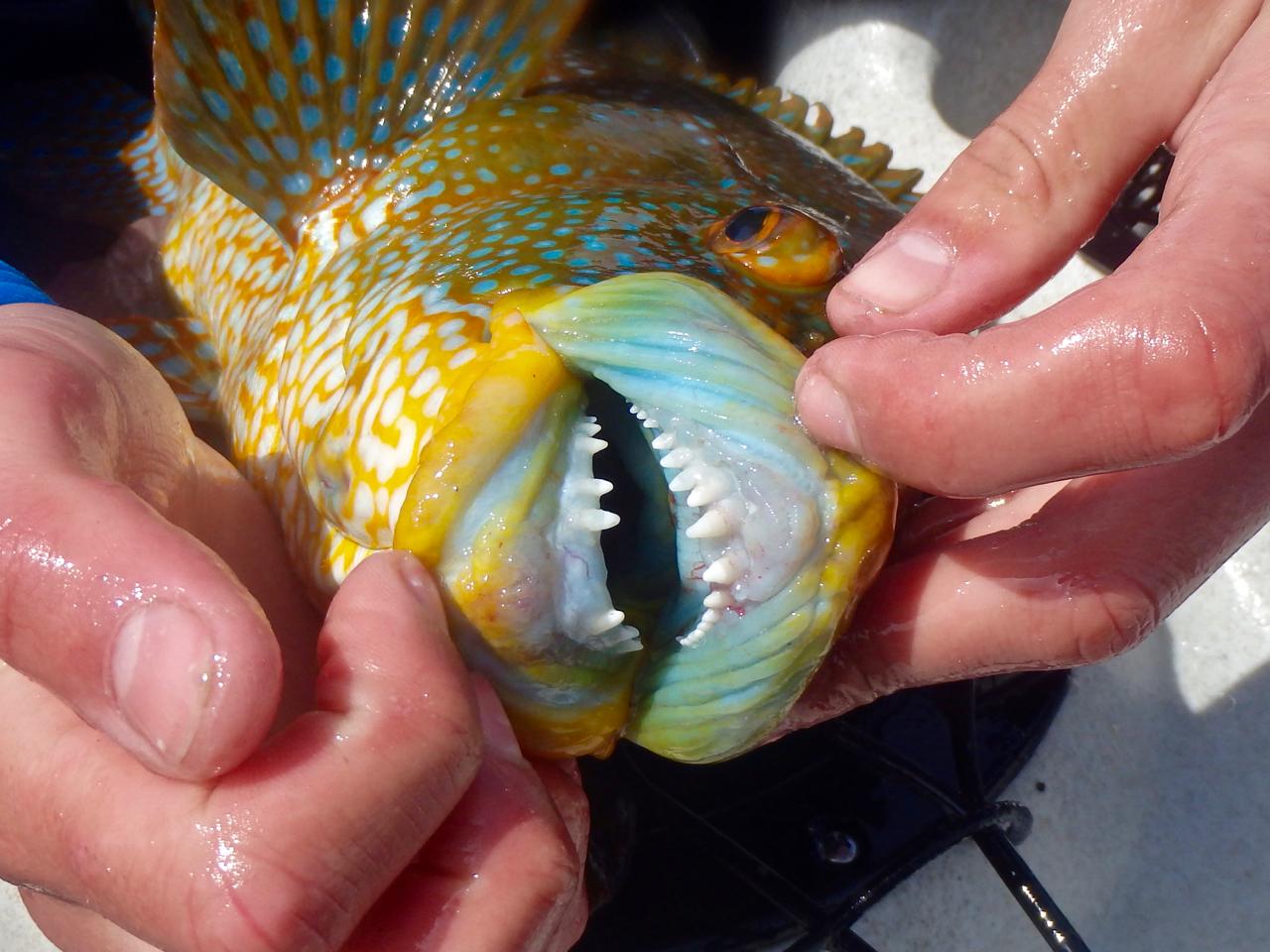
Where and when to find Ballan wrasse
Ballan wrasse like to inhabit rough and rocky ground, reefs and kelp beds and can often be found around other hard structures such piers and harbour walls. They can be found anywhere from the shallow intertidal zone down to deep water reefs and wrecks. They can be found around much of the UK, but are more prolific around western and southern shores where larger expanses of rocky coastline and offshore rough ground can be found. Wrasse are typically a summer species for most, with fish moving to deeper water during in the winter months, although they can be caught all-year round in sheltered spots.
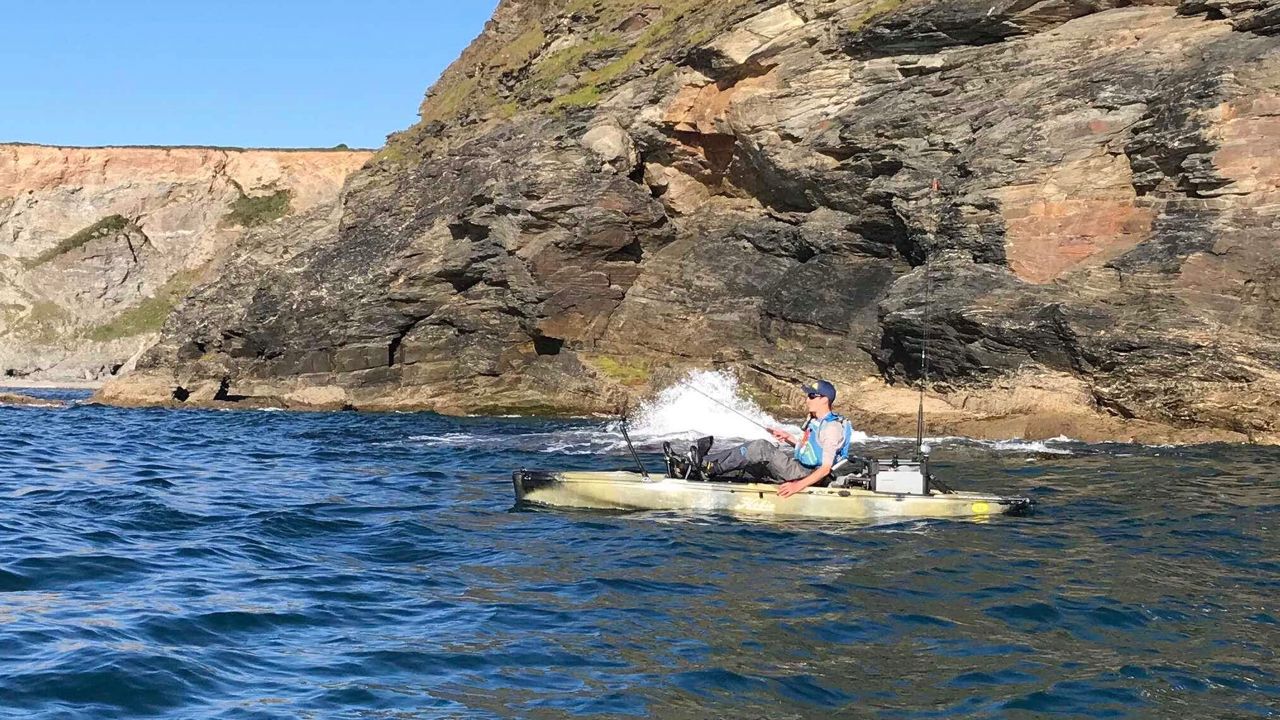
Kayak fishing for wrasse
A kayak is pretty much the perfect craft from which to target Ballan wrasse. You can get right in amongst the rocky ground close shore where wrasse are often found. A kayak allows you to access areas that the shore anglers cannot get too and you can fish the ground close to the rocks that the larger boats won’t go near. Targeting Ballans from a kayak also allows you to cover larger areas of ground too and once you find the fish, the sport can often be frantic!
What gear do I need?
Short bursts of aggressive power means that you will need a rod with a bit of backbone when targeting Ballan wrasse. The worst of the battle will be as soon as you hook the fish and it darts for sheltered. If a wrasse manages to get back amongst the rocks or seaweed then it is usually game over. An initial tug of war will need some brute strength but once the fish is a little way off the bottom you can take it easier. Set your drag fairly tight for the initial scrap, but allow the fish to take line if needed so that you don’t get smashed up. You can always back off the drag a touch once the fish is clear of the bottom. Whilst smaller fish are unlikely to be a cause for concern, bigger 4 lb+ wrasse will certainly put your gear to the test. Heavy spinning or lure rods work well, paired with a fixed spool reel loaded with 40 lb braid. I use a 10-50 gr lure rod for the ultimate fun, but this is on the limits of how light i will go, and the odd fish still gets the better of me and reaches the bottom.
In some areas there are lots of small wrasse, and this is often the case around many harbours and piers too. Smaller Ballans can be great fun to catch on very light LRF gear. An 8 oz wrasse can bend a 0.5-7 gr rod over double and have you playing it carefully on 8 lb line! Great fun even if the big wrasse aren’t about.
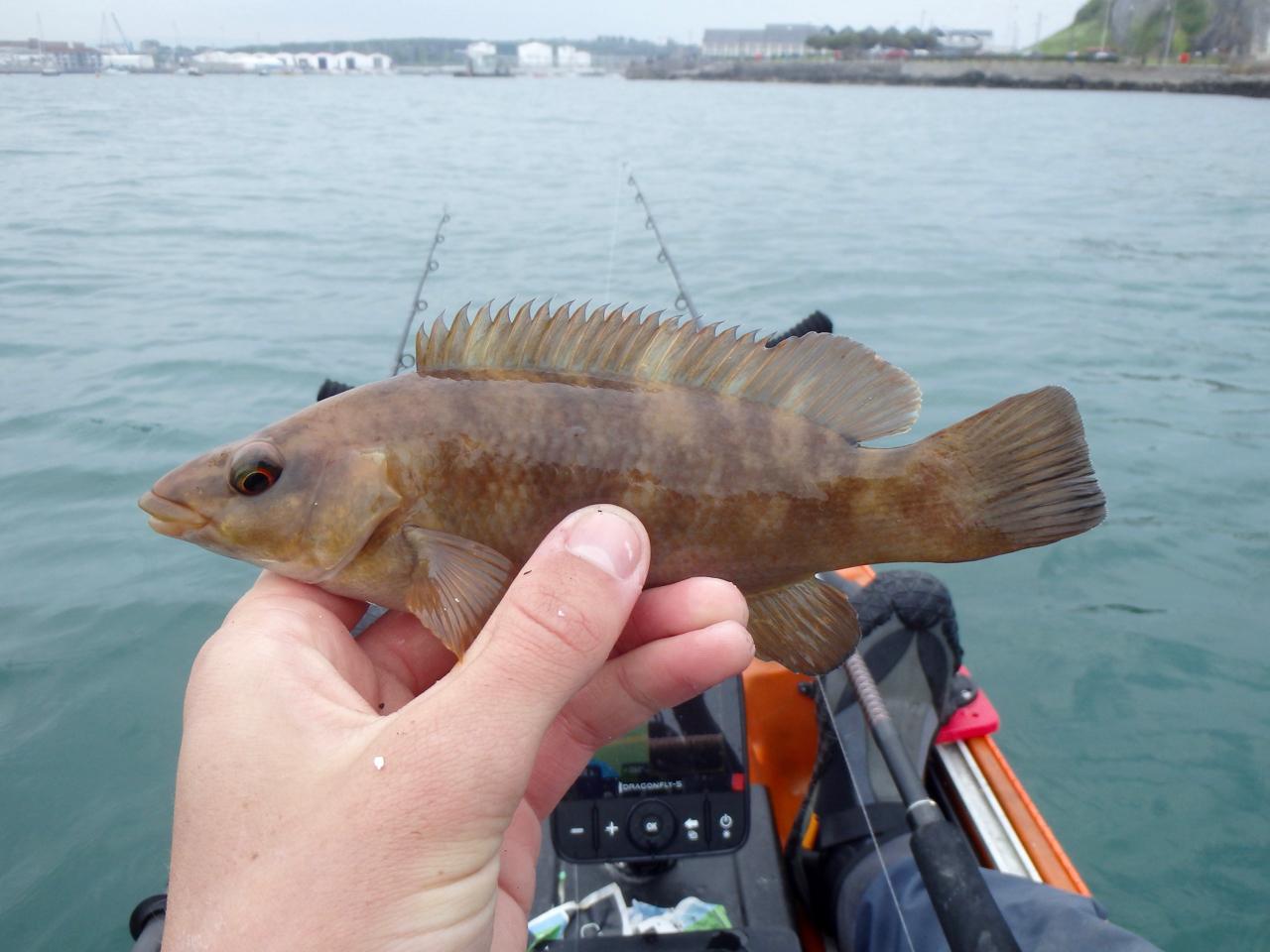
Ballan wrasse on bait
Traditionally Ballans are targeted using worm or shellfish baits presented on the bottom. This is still a very effective method to catch wrasse and I have had most success using rag worm, with hardback crabs and peeler crab picking out the bigger specimens. Rigs need to be simple and strong. I recommend a single hook paternoster constructed from 30 lb mono, with the weight trace just slightly longer than the hook trace. It often pays to use a weak-link on the weight, as you will be fishing over snaggy ground. If you don’t get snagged every so often then you are in the wrong spot!
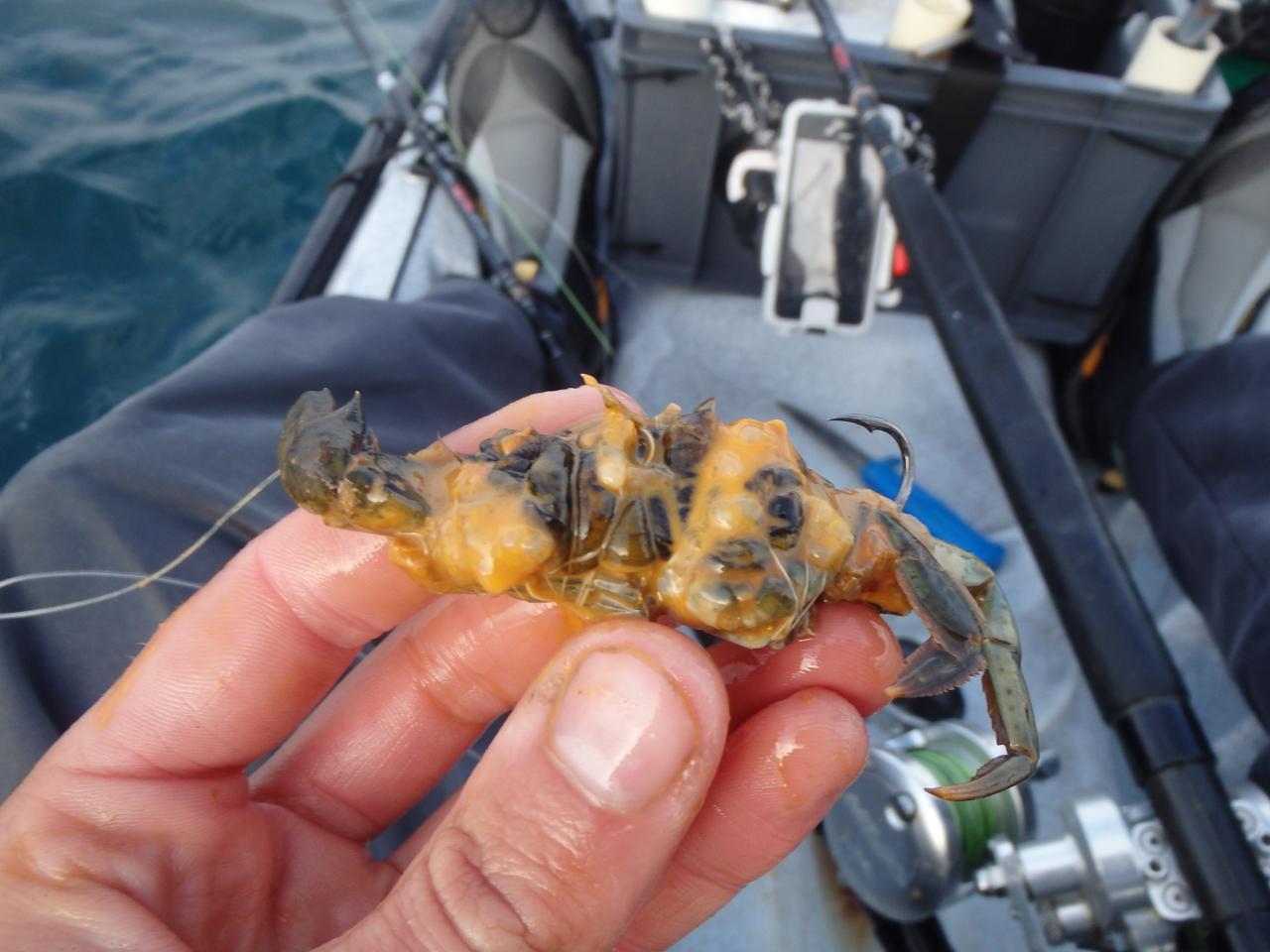
Hook size will be dependant on the bait and the size of wrasse you are likely to be catching. Any strong gauge hook between a size 4 and 2/0 will cover most scenarios. I prefer a hook between a size 4 and size 1 for ragworm baits, and a size 2/0 hook when using crab baits. Sakuma Mini Manta and Chinu patterns work well, as do Tronix Pro Big Dog hooks. Bait fishing for wrasse is usually best done at anchor. Find a likely looking spot and lower your bait onto or near rough ground or structure. Wrasse will soon home in on the bait if they are present. Bites can range from small taps and pulls to aggressive hit and runs! Strike fast to avoid deep hooking and to give you the best chance of extracting the fish away from a snag.
Ballan wrasse on lures
Recently there has been big increase in the use of lures when fishing for Ballan Wrasse. Soft plastic lures have been proven to be particularly effective. I have found small minnow and sand eel style lures and Texas-rigged Senko worm and crawfish patterns work best.
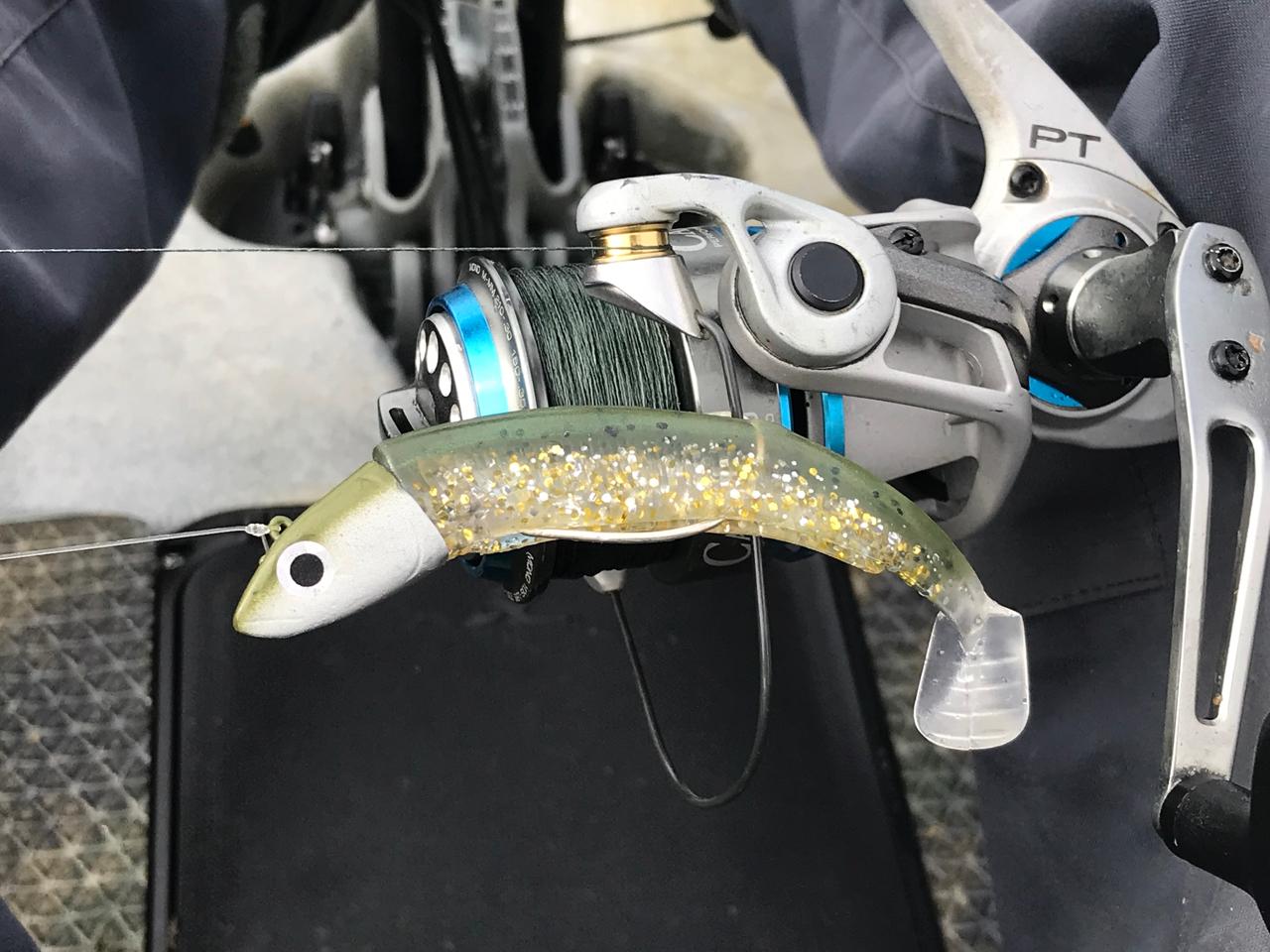
My personal best Ballan wrasse of 6 lb 14 oz was taken using a Savage Gear sand eel lure, and my second biggest of 6 lb 4 oz was taken using a Fiiish Minnow. Lure fishing for wrasse is very effective and very addictive. The aggressive takes and immense power can make for an exhilarating fight, especially in shallow water on light gear. It is easy too, just work the lure close to, or on the bottom around rocks and weed and wait for a wrasse to smash and grab!
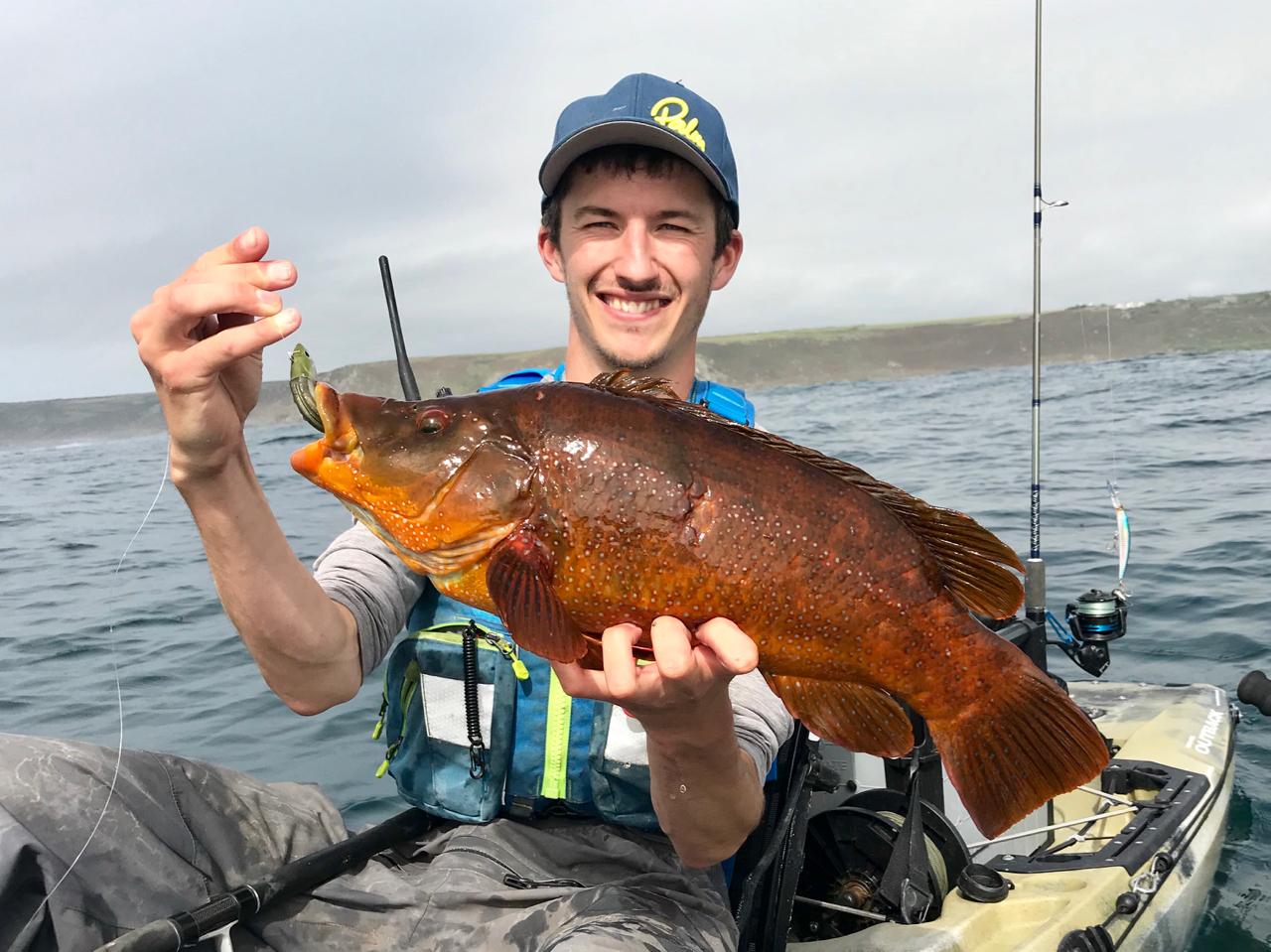
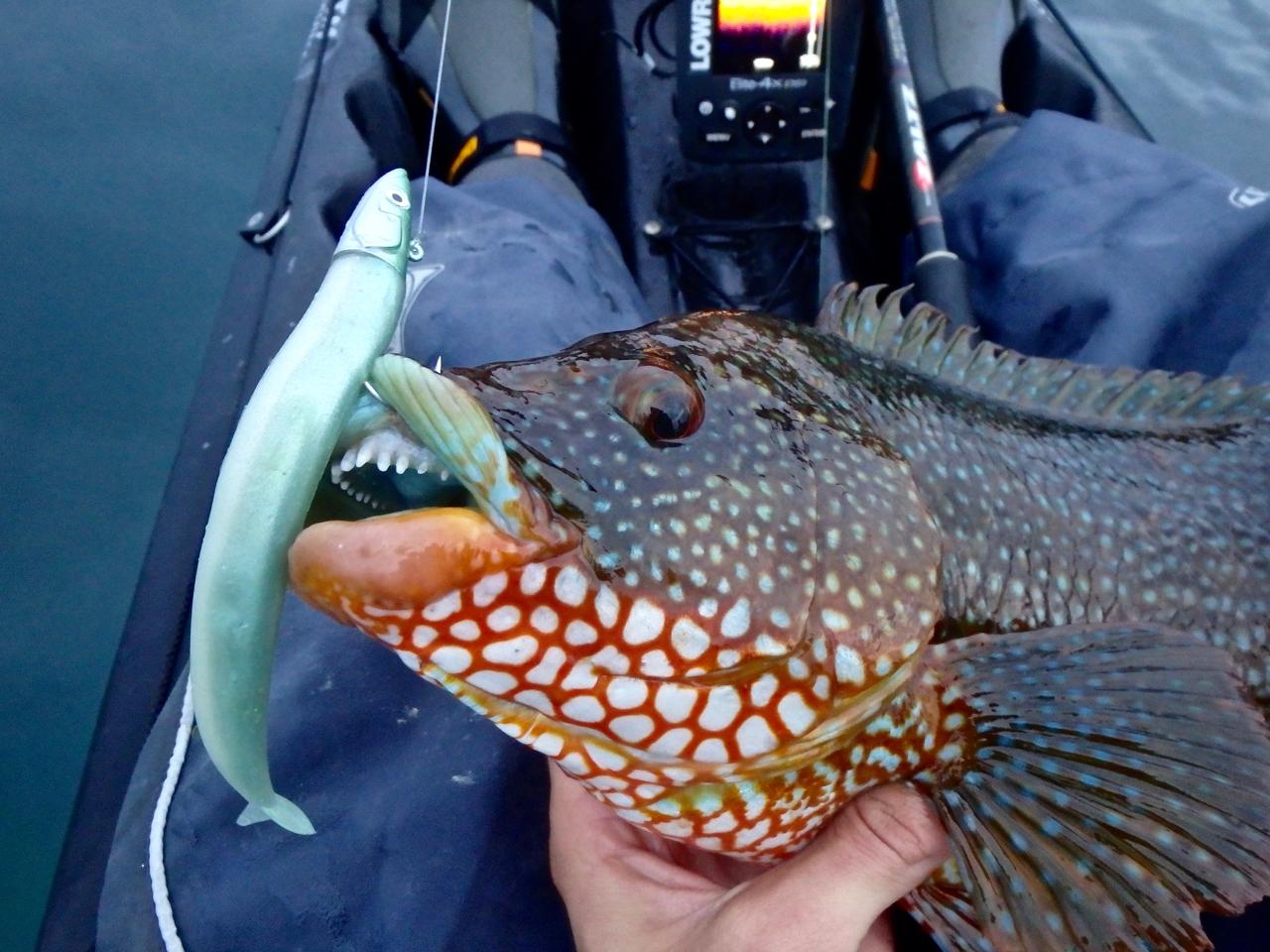
Catch and release
Wrasse are a slow-growing species and not really considered a good eating fish so be sure to practice catch and release to ensure there will be plenty of fish to catch now and when your return. They are a hardy species living in a tough environment so providing they are handled with care and returned quickly they have a high chance of survival and indeed I have caught the same fish on more than one occasion, and even one fish that was caught twice in the same session!
Go wrestle with a wrasse!
If you haven’t yet done battle with a Ballan then grab some gear and find some rough ground. After a few rod bending wrestling matches with a wrasse you’ll soon see what all the fuss is about! Get out there and admire these fantastic fish for yourself.
